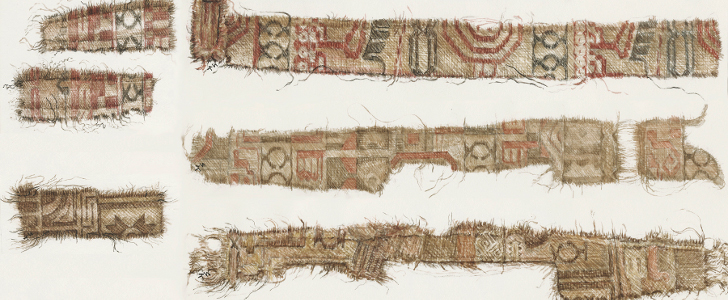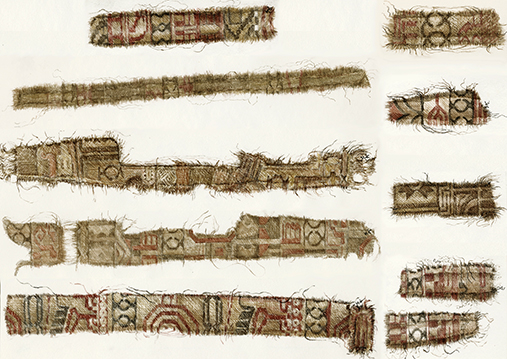Silk found in various Viking ship burials has been long been known to be Persian – and thought to represent looting from English and Irish churches and monasteries. Recent research, however, has suggested that it probably represents an extended trade network carrying goods from Persia all the way to the Vikings.

Vedeler suggests this largely on the basis of the rich textile finds in the Oseberg ship burial. Oseberg has the largest and most varied collection of textiles and textile tools ever found in a single Nordic grave. There are more than 100 silk fragments, from fifteen different textiles. Most of the remains are of strips, cut thin to be used on clothing. The strips include Persian motifs like the simurgh, and clover-leaf axes (a Zoroastrian zodiac symbol). Vedeler has demonstrated that the imported cloth was mostly woven using a Central Asian technique called samitum; although there are also tablet-woven bands made locally from imported silk thread. She has also collected information on silk and its trade in the Nordic countries; and studied manuscripts on silk production and trade along the Russian rivers as well as in Byzantium and Persia.

The Oseberg boat was 20m long, with 30 oars. It is thought to have been specially built in 834AD (from the dendrochronology) for the burial of two women. Consistent with this, are two female skeletons found in the ship-burial: one in her eighties is thought to have been a queen; the other was in her fifties, perhaps a high priestess, and from the Black Sea region (from the DNA).

Oseberg was a rich grave, with beds, sledges, wagons, tools, as well as all the textile-related items. There’s a vertical loom; a braid loom; tablets for tablet weaving; spinning tools; and sheep-shears. As well as the silk fabrics and embroideries, there are fragmented tapestries and pattern-woven blankets of wool and linen, tablet woven braids and a large collection of textile fragments, from clothing, sails or tents, and rugs.
This week, I saw some great new research on the Viking-Persian connection. Those Vikings were trading with Persia – not just looting British monasteries and churches. Read all about it here.
While you’re doing that – pucker up to Kiss for Peace. Click here to join in – and post a photo of yourself blowing kisses, and sending personal messages of friendship. Its all designed to demonstrate your willingness to move beyond the troubled history that still plagues US-Iran relations. Though I think we should all get involved, even if you don’t have either an Iranian or American passport. It’s not possible to blow too many kisses, after all!